Discovery of an unconventional lamprey lymphocyte lineage highlights divergent features in vertebrate adaptive immune system evolution
- PMID: 39227584
- PMCID: PMC11372201
- DOI: 10.1038/s41467-024-51763-2
Discovery of an unconventional lamprey lymphocyte lineage highlights divergent features in vertebrate adaptive immune system evolution
Abstract
Lymphocyte receptors independently evolved in both jawed and jawless vertebrates with similar adaptive immune responses. However, the diversity of functional subtypes and molecular architecture in jawless vertebrate lymphocytes, comparable to jawed species, is not well defined. Here, we profile the gills, intestines, and blood of the lamprey, Lampetra morii, with single-cell RNA sequencing, using a full-length transcriptome as a reference. Our findings reveal higher tissue-specific heterogeneity among T-like cells in contrast to B-like cells. Notably, we identify a unique T-like cell subtype expressing a homolog of the nonlymphoid hematopoietic growth factor receptor, MPL-like (MPL-L). These MPL-L+ T-like cells exhibit features distinct from T cells of jawed vertebrates, particularly in their elevated expression of hematopoietic genes. We further discovered that MPL-L+ VLRA+ T-like cells are widely present in the typhlosole, gill, liver, kidney, and skin of lamprey and they proliferate in response to both a T cell mitogen and recombinant human thrombopoietin. These findings provide new insights into the adaptive immune response in jawless vertebrates, shedding new light on the evolution of adaptive immunity.
© 2024. The Author(s).
Conflict of interest statement
The authors declare no competing interests.
Figures
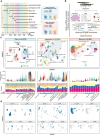
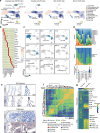
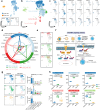
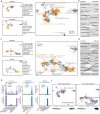

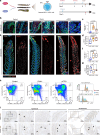
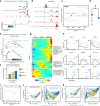
Similar articles
-
Variable lymphocyte receptor F is generated via somatic diversification and expressed by lamprey T-like cells.Nat Commun. 2025 Jul 15;16(1):6503. doi: 10.1038/s41467-025-61187-1. Nat Commun. 2025. PMID: 40664669 Free PMC article.
-
Divergence of Leptin Receptor and Interleukin-6 Receptor Subunit b in Early Vertebrate Evolution and Physiological Insights from the Sea Lamprey.Mol Biol Evol. 2025 Jul 1;42(7):msaf157. doi: 10.1093/molbev/msaf157. Mol Biol Evol. 2025. PMID: 40590309 Free PMC article.
-
T-bet expressing Tr1 cells driven by dietary signals dominate the small intestinal immune landscape.bioRxiv [Preprint]. 2025 Jul 4:2025.06.30.662190. doi: 10.1101/2025.06.30.662190. bioRxiv. 2025. PMID: 40747421 Free PMC article. Preprint.
-
Interactions Between the Innate and Adaptive Immune Responses.Adv Exp Med Biol. 2025;1476:297-308. doi: 10.1007/978-3-031-85340-1_12. Adv Exp Med Biol. 2025. PMID: 40622548 Review.
-
Variable Lymphocyte Receptors: A Current Overview.Results Probl Cell Differ. 2015;57:175-92. doi: 10.1007/978-3-319-20819-0_8. Results Probl Cell Differ. 2015. PMID: 26537382 Review.
Cited by
-
Variable lymphocyte receptor F is generated via somatic diversification and expressed by lamprey T-like cells.Nat Commun. 2025 Jul 15;16(1):6503. doi: 10.1038/s41467-025-61187-1. Nat Commun. 2025. PMID: 40664669 Free PMC article.
-
Single-cell RNA sequencing illuminates the ontogeny, conservation and diversification of cartilaginous and bony fish lymphocytes.Nat Commun. 2024 Sep 3;15(1):7627. doi: 10.1038/s41467-024-51761-4. Nat Commun. 2024. PMID: 39227568 Free PMC article.
References
-
- Bernstein, R. M., Schluter, S. F., Bernstein, H. & Marchalonis, J. J. Primordial emergence of the recombination activating gene 1 (RAG1): sequence of the complete shark gene indicates homology to microbial integrases. Proc. Natl Acad. Sci. USA93, 9454–9459 (1996). 10.1073/pnas.93.18.9454 - DOI - PMC - PubMed
Publication types
MeSH terms
Associated data
LinkOut - more resources
Full Text Sources

